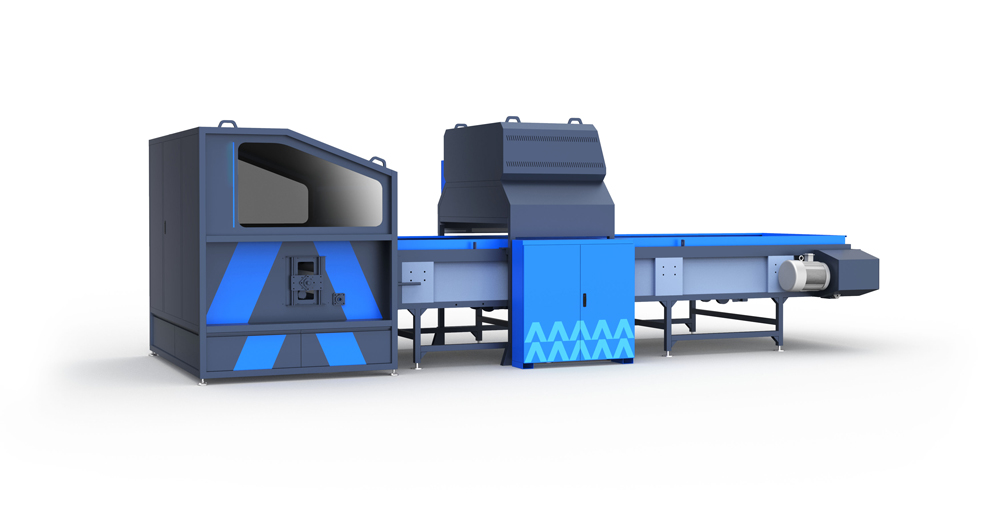 Time:2024-11-07
Time:2024-11-07
 Source:青绿环境
Source:青绿环境
Optical sorters are intelligent sorting equipment based on photoelectric principles, playing a significant role in the field of waste sorting. As China's emphasis on waste classification and resource recycling continues to grow, the application of optical sorters in waste sorting scenarios has become increasingly widespread. Here is a specific analysis of the application of optical sorters in waste sorting scenarios.

During the waste sorting process, optical sorters mainly recognize the color, shape, size, and other characteristics of waste to automatically sort different types of waste. Here are the main applications of optical sorters in waste sorting scenarios:
Improving Sorting Efficiency: Traditional waste sorting mainly relies on manual labor, which is inefficient and labor-intensive. The application of optical sorters can greatly improve waste sorting efficiency, achieving automated and intelligent sorting. Optical sorters can handle thousands to tens of thousands of pieces of waste per hour, significantly increasing the speed of waste processing.
Enhancing Sorting Accuracy: Optical sorters use advanced image recognition and processing technology to accurately identify various types of waste. Compared to manual sorting, optical sorters have a higher recognition and accuracy rate, which helps improve the level of waste resource utilization.
Rich Application Scenarios: Optical sorters can be applied to various waste sorting scenarios, such as the sorting of recyclable waste like plastics, paper, metal, and glass. Here are some specific applications:
(1) Plastic Waste Sorting: Optical sorters can recognize different types of plastic waste and categorize them into PET, HDPE, PP, etc., facilitating subsequent resource recovery and utilization.
(2) Paper Waste Sorting: Optical sorters can sort paper waste into different types such as newspapers, cardboard, and office waste paper based on their color and thickness characteristics.
(3) Metal Waste Sorting: Optical sorters can identify and sort metal waste such as iron, aluminum, and copper, increasing the recovery and utilization rate of metal resources.
Reducing Labor Costs: The application of optical sorters can reduce the manual input at waste sorting sites and lower labor costs. At the same time, optical sorters have lower operating and maintenance costs, which helps improve the economic benefits of waste processing enterprises.
Significant Environmental Benefits: The application of optical sorters helps increase the utilization rate of waste resources, reducing environmental pollution from landfilling and incineration. Additionally, it promotes the development of a circular economy, achieving a green and low-carbon lifestyle.
In summary, the application of optical sorters in waste sorting scenarios has significant advantages, not only improving waste processing efficiency but also reducing labor costs and having high environmental benefits. With the continuous advancement of waste classification policies, the application of optical sorters in the field of waste sorting will become more extensive, contributing to China's environmental protection efforts.













 Prev
Prev











